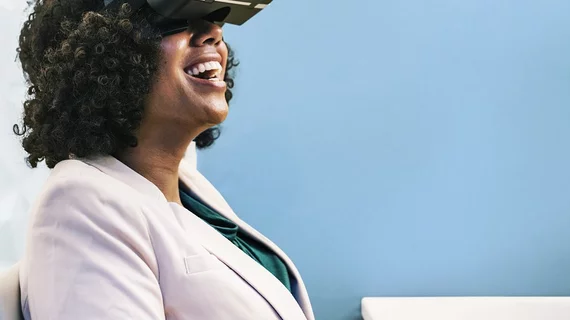Radiologists who use a virtual reality (VR) device to examine CT scans may detect brain aneurysms as accurately as other techniques such as conventional CT angiography (CTA) and 3D rotation angiography scans.
Researchers, led by Xiujuan Liu, PhD, found that using a VR headset was able to identify brain aneurysms with the same accuracy as matched reference standards, according to a study published in Clinical Neurology and Neurosurgery.
"The true stereoscopic [VR] 3D display system highlights the depth of information," Liu et al. wrote. "The viewer can better appreciate the spatial relationship of a lesion using the stereoscopic virtual reality display system than the conventional CT workstation."
Although 3D rotational angiography has been superior for detecting dangerous and potentially fatal intercranial aneurysms, the researchers explained that clinicians have started to lean toward using other less invasive and time-consuming imaging modalities with a lower risk of complications — and, in this case, instead utilizing noninvasive and timely CTA imaging.
However, CTA does have its limitations due to depth restrictions with 2D visualization, which involves missing aneurysms that are small or close to bone structure. In response to this, Liu and colleagues set out to use VR technology to help clinicians better identify the spatial relationship between an intracranial aneurysm and the space around it.
The researchers collected imaging data of 42 patients (average age of 56 years, 76 percent women) with suspected intracranial aneurysms who underwent both CTA and 3D angiography exams between January 2012 and February 2014. The CT scans were reconstructed as volume-rendered images and transferred to a VR software. With VR glasses, two radiologists then reviewed the images in the researchers' stereoscopic VR headset.
Some 39 brain aneurysms (including one false-positive finding) were identified by the radiologists with the VR headset, according to the researchers.
In comparison, the radiologists found 38 aneurysms in 36 patients using 3D rotational angiography and 37 aneurysms (including one false-positive and two false negative findings) with CTA.
The radiologists were also able to spot smaller-sized aneurysms more often with VR than the other two techniques, which may significantly help neurosurgeons obtain a knowledge of the aneurysm morphology and surrounding anatomical structure to perform a safe and accurate surgical dissection and clipping of the aneurysm before it ruptures, the researchers wrote.

